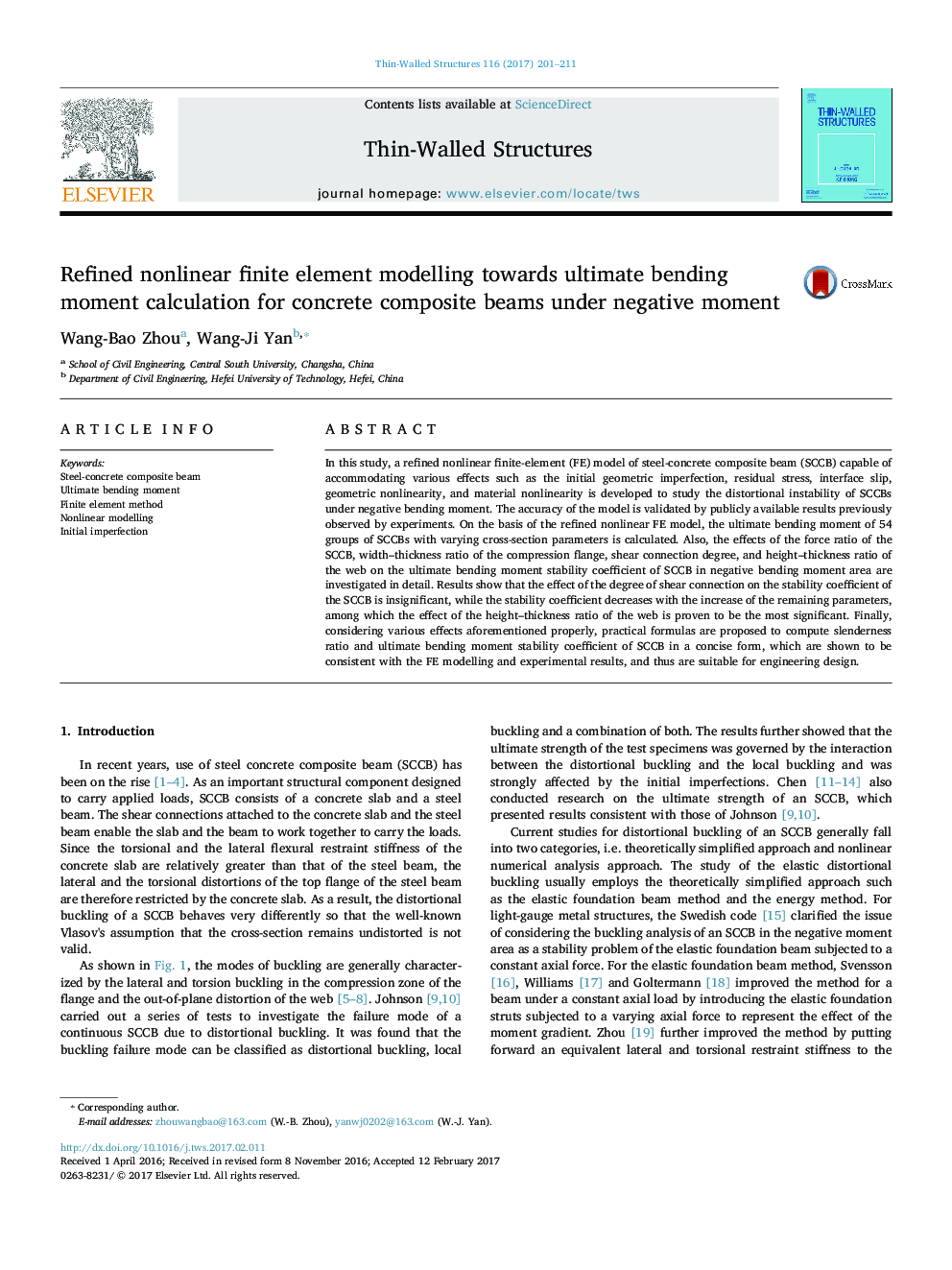| Article ID | Journal | Published Year | Pages | File Type |
|---|---|---|---|---|
| 4928601 | Thin-Walled Structures | 2017 | 11 Pages |
Abstract
In this study, a refined nonlinear finite-element (FE) model of steel-concrete composite beam (SCCB) capable of accommodating various effects such as the initial geometric imperfection, residual stress, interface slip, geometric nonlinearity, and material nonlinearity is developed to study the distortional instability of SCCBs under negative bending moment. The accuracy of the model is validated by publicly available results previously observed by experiments. On the basis of the refined nonlinear FE model, the ultimate bending moment of 54 groups of SCCBs with varying cross-section parameters is calculated. Also, the effects of the force ratio of the SCCB, width-thickness ratio of the compression flange, shear connection degree, and height-thickness ratio of the web on the ultimate bending moment stability coefficient of SCCB in negative bending moment area are investigated in detail. Results show that the effect of the degree of shear connection on the stability coefficient of the SCCB is insignificant, while the stability coefficient decreases with the increase of the remaining parameters, among which the effect of the height-thickness ratio of the web is proven to be the most significant. Finally, considering various effects aforementioned properly, practical formulas are proposed to compute slenderness ratio and ultimate bending moment stability coefficient of SCCB in a concise form, which are shown to be consistent with the FE modelling and experimental results, and thus are suitable for engineering design.
Related Topics
Physical Sciences and Engineering
Engineering
Civil and Structural Engineering
Authors
Wang-Bao Zhou, Wang-Ji Yan,
